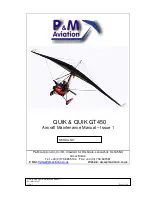
8
Harness
For flight comfort and safety it is very important that you fly with a suitable, properly
adjusted harness. It is important to set up your harness correctly before flying the glider.
Make sure to spend time adjusting your harness’s different settings until your sitting
position is completely comfortable. The Elan 3 is certified for use with all harnesses with
variable cross-bracing (GH type). Practically all modern harnesses are GH type harnesses.
Older harnesses with fixed cross-bracing (GX type) are not certified and should not be
used.
It’s important for your comfort and safety to fly with a suitable harness that is properly
adjusted. When choosing a harness, remember that the height of the attachment points
(i.e. distance from the carabiners to the seat plate) affects the sensitivity of the glider and
the relative brake travel. The lower position of the carabiners, the more sensitive the glider
is to weight-shift.
The adjustment of the chest strap change the distance between carabiners and affects the
stability of the glider and its handling. Excessive tightening of the chest strap increases
stability but also the risk of riser twists following glider collapses. It also increases the
tendency of getting collapses due to poor feedback from the glider. The risk of twisting is
also strongly influenced by the seating position of the pilot. Flying in a laid back (reclined)
position makes it much more difficult to react in time to prevent riser twisting. With the
chest strap in a more closed position the glider also has more tendency to maintain a
stable spiral. With the chest strap in a more open position, feedback from the glider
increase but stability decrease.
EN certification test flights are carried out with the horizontal distance between the harness
attachments points (measured between connector centrelines) set depending on the total
weight in flight as follows:
Total weight in flight
<80 kg 80 to 100 kg
> 100 kg
Width 40 ± 2 cm
44 ± 2 cm
48 ± 2 cm
We recommend adjusting the distance of the chest strap according to the table and, if
necessary, to adapt easily. Take care your leg and shoulder straps are not adjusted too
tightly. If you do, you may have difficulty sitting back into your harness after take-off.
If any problems or disturbances are encountered when flying with a reclined harness, the
pilot must immediately assume an upright seating position. Extreme flight manoeuvres
flown in a reclined position drastically increase the risk of twist. In addition, pilots often
underestimate the reduction in control travel caused by flying an extreme flight manoeuvre.
Содержание elan3
Страница 1: ...1 ...
Страница 31: ...31 LINE PLAN ELAN 3 ...
Страница 34: ...34 CHECKS Name Company Date Signature Stamp ...
Страница 36: ...36 ...
Страница 37: ...1 ...
Страница 70: ...34 PLAN DE SUSPENTESELAN 3 ...
Страница 74: ...38 CONTROLES Nom Entreprise Date Signature et cachet ...
Страница 76: ...40 ...









































